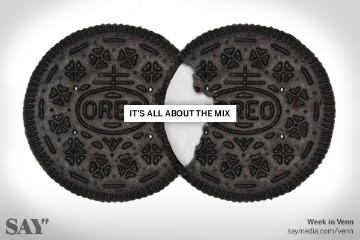The 5 Myths of Native Advertising - SAY Media

There's a new black in digital media and it's called native advertising. What it is and who coined the phrase depends on who you ask. Mashable credits Fred Wilson from a talk he gave last September where he mentioned "native monetization" for Web properties like Tumblr. Dan Greenberg of Sharethrough liked the concept and though he didn't give it its name, he does take credit for evangelizing it.
Whatever you call it, if you haven't seen native advertising yet, you just haven't been looking: it's that "Sponsored Tweet" in your newsfeed or the "Suggested Post" on your Facebook page. It's also that sponsored story. Native ads allow marketers to deliver messages that take on the form of the medium they are delivered in. That's ads as media, customized to the vast number of media platforms in our lives today.
But before you start ditching banner ads, getting rid of your direct sales teamor shifting all the dollars you spend to native advertising , let's put this in perspective and explode some myths:
Myth 1: Native advertising is a new idea. Not true. Brands have been integrating their message into content experiences for years. Athletes wearing Nike shoes, judges drinking Coke on American Idol, even Fred Flintstone and Barney Rubble went native when they pushed Busch Beer in ananimated commercial in 1967. Technically that's all native, just like Coke's brand page on Facebook or those sponsored tweets that pop in your Twitter stream.
Myth 2: Native ads are just branded content. While native ads often include running branded content on partners sites, or sponsoring an article, in reality it's so much more. To be successful, this kind of content has to reflect what Gary Vaynerchuk calls the " native tongue of the platform." It needs to reflect the way the platform is used, and the expectations of the the audience. Even the best branded content in the wrong environment doesn't work. Starbucks and Remodelista partnered together to create an experience done right. This same campaign on ESPN would be a flop.
Myth 3: Native advertising scales. Wrong. There are only so many sponsored posts, tweets, or stories that can be introduced into a reader's feed before the experience is too saturated. If you want scale, you need something that finds the balance between great content or information and advertising. If Twitter or Facebook think that native ads alone will solve their revenue puzzle, their communities (myself included!) will revolt.
Banners are definitely under pressure, but the appropriate interruptive or adjacent advertising experience is essential to a scaled media strategy. Every digital property needs to balance what readers want with their various ad solutions. Too much advertising in any format will turn off readers and they'll bail. If Twitter isn't able to innovate beyond its current set of ad products, what we used to call banner blindness will become activity stream blindness.
Myth 4: Native ads should replace banner ads. They can't (see Myth #3). It's also a bad strategy for publishers that want to grow, like having too much advertorial in print. There's a place for using content within the ad experience, but there needs to be a balance between brand message and content. Canon and Gear Patrol's " Sharp Shooter Series" is a great example of this equilibrium.
Myth 5: Native ads don't have to be high quality. Well, they don't if you don't care about your brand equity - and the publishers with the people you want don't mind alienating their audiences. Great digital media brands are successful because they know how to engage their readers and they have a conservative ratio of content to advertising. They resist the urge to clutter their pages with display ads, native ads or any other forms of custom integration. Instead, they focus on the best way to grow their audience - by finding new ways to delight their readers that in turn drive more page views.
Native ads are a powerful part of the media mix, but they're not a magic bullet - and there's still so much need for innovation. After all, good advertising really is content. So instead of throwing everything into this month's next big thing, how about we push each other to obsess about both earning readers' attention and inspiring them to feel something powerful - whether that's through editorial partnerships, amazing creative or something entirely new.
David Tokheim is SVP of Media Solutions at Say Media. Like what we're writing? Please like us on Facebook .
SAY Media is a digital publishing company that creates amazing media brands. Through its technology platform and media services, SAY enables its portfolio of independent content creators to build passionate communities around key consumer interest areas such as Style, Living, Food and Tech. For more information visit www.saymedia.com.
Read all SAY Media's MediaBizBloggers commentaries at SAY Daily.
Check us out on Facebook at MediaBizBloggers.com
Follow our Twitter updates @MediaBizBlogger
The opinions and points of view expressed in this commentary are exclusively the views of the author and do not necessarily represent the views of MediaBizBloggers.com management or associated bloggers. MediaBizBloggers is an open thought leadership platform and readers may share their comments and opinions in response to all commentaries.

